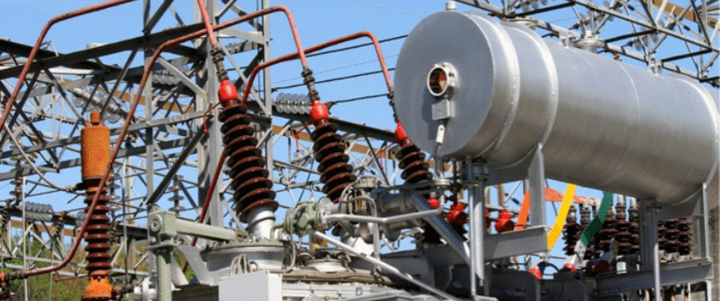Transformer Oil Analysis
A transformer is an electrical apparatus intended to alter current from one voltage to another. It can be designed to "step up" or "step down" voltages and works on the magnetic induction principle. Transformer Oil helps cool the Transformer.
Factors like electrical stress or chemical adulteration shall result in failure of the transformer and reduce the transformer’s life.
Purposes of Transformer Oil
- Deliver dielectric strength of the insulation system
- Deliver efficient cooling
- Safeguard the transformer’s core and coil apparatus from chemical attack
- Avoid the accumulation of sludge
Detoriation Aspects of Transformer Oil
Transformer Oil is used to both cool the transformer and to insulate internal components. Since it washes every internal component, the oil contains a great amount of diagnostic information. Analysis of this transformer fluid can offer advance warning of emerging conditions such as contamination and ageing. Complications with the Transformer can be caused by various factors as mentioned below:
- Corrosion due to the accidental leakage of water
- Weakening due to the chemical decomposition
- Worsening due to the oxidation
- Corrosion due to the contamination by gases
- Weakening due to the electrical stresses
- Weakening due to the thermal stresses
- Worsening due to the effect of oxidation products
- Decline due to the physical contamination.
- Weakening due to breathing action
Solution to the Transformer Needs:
Transformer oil testing consists of measuring breakdown voltage and other physical and chemical properties of samples of the oil, either in a laboratory or using portable test equipment on-site
Our Analysis Includes below Test Parameters:
- Appearance – Visual
- Color - ASTM D 1500/ ISO 2049
- Water Content - ASTM D 6304/ IEC 733/ EEC 60814/ IS 13567
- Acid Number (Neutralization No.) - ASTM D 974/ IEC 74/ IEC 62021-2/ IS 1448 P: 2
- Brake Down Voltage - ASTM D 877/ D 1816/ IEC 156/ IEC60156/ IS 6792/ IS 335
- Dissipation Factor @ 90˚C / Power Factor @ 25˚C - ASTM D 924/ IEC 247/ IEC 60247/ IS 6262
- Interfacial Tension @ 25˚C - ASTM D 971/ ISO6295/ IS 6104
- Density @ 20˚ C/ 29.5˚C - ASTM D 1298/ IEC 296/ ISO 3675/ IEC 60422/ IS 1448 P:16
- Kinematic Viscosity - ASTM D 445/ ISO 3104/ IS 1448 P: 25
- Corrosive Sulphur - ASTM D 1275-B/ IEC 62535/ ISO 5662/ IS 335/ IS 1866
- Dissolved Gas Analysis - ASTM D 3612-C
- Furan Analysis - ASTM D 5837/ IEC 61198
- PCB Content - ASTM D 4059
- Gassing Tendency (Resistivity) - ASTM D 2300/ IS 6103
- Oxidation Stability (Rotating Bomb Test) - ASTM D 2112
- Flash Point - ASTM D 92/ ISO 2719/ IS 1448 P:21
- Pour Point - ASTM D 97/ ISO 3016/ IS 1448: P10
- Aniline Point - ASTM D 611
- Sludge Content - ASTM D 2440/ IEC 74/ IS 335
- Neutralization Value - ASTM D 2440/ IEC 74/ IS 335
- Specific Resistance ( Resistivity) - IS 1866
- Elemental Analysis/ Metal Analysis – ASTM D 5185


